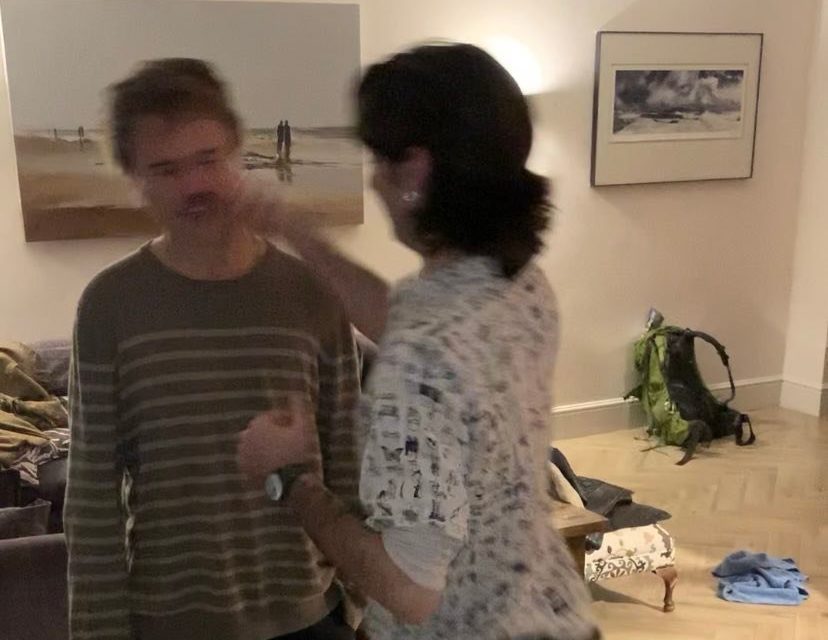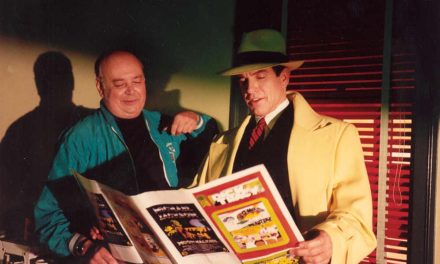At a punk gig a few months ago I was clipped on the side of the face by a free flying fist. It seemed to belong to no one in particular. My beloved, precious hat was knocked into the crowd, landing on the sticky beer coated floor. I had to wait like fifteen minutes before I could get it back. When we were finally reunited it was weird and gross and I had to wash it. The ordeal raised a lot of questions for this young, handsome reporter. I’ve experienced basically zero violence in my life – am I a loser? Why was this exciting? Am I a complete freak? Are you supposed to wash hats? Have I been a repulsive fucking gremlin my entire life? Walking around in a shit stained hat, my oblivious shit-eating grin broadcasting to the world that I’m a moron? An idiot? A stupid little guy?
When the witches in Macbeth sit around making some kind of soup and singing a weird song they put a thought into the titular character’s head – he can usurp the throne of Scotland. At no point did these Wayward Sisters force Macbeth to kill the king and bring about his own destruction. He is ultimately responsible for his own fate, brought down by the mere thought of power. A self fulfilling prophecy. His ride-or-die Banquo, of course, is presented with a similar vision and does not fall prey to its trap. The overall point of Macbeth, I think, is that nobody makes you do dumb things. But if you’re a dumbass you’re going to do it anyway.

This profound insight into the human condition should naturally remind us of Japanese post-war experimental architecture. Scholars of the region would tell you that Japan was basically a giant heap of rubble by the end of World War Two. The US smoked their cities with firebombs and then nuked them twice – poisoning the earth itself, murdering the Sun, mutating children.
‘Why has the sky been replaced with bitter ash? Why is Paradise now Hell? Why does my baby have three arms?’ – Pearl Harbor, apparently.
This largely unrecognised crime against humanity brought professional architecture onto the map in the country, taking the job away from traditional craftsmen and placing the burden on artists. There were probably a lot of reasons for this – first off, traditional Japanese architecture was primarily wood based and they had recently learned the hard way that this was flammable. But the country also needed a new, non-imperial image, and thus needed new, non-imperial buildings to display their newfound, good spirited Western modernism. Of course, this rebuilding and rebranding of Japan raised a lot of questions for a new generation of Japanese architects – do we build Japanese buildings? Or do we build Western buildings? Maybe a bit of both?
At the 1960 World Design Conference in Tokyo, Japan was given the opportunity to say ‘we are normal and very sorry’ to the entire world by displaying their new, innovative creations to delegates from across the globe. A group of young architects selected for this task went, and this is the only adequate term, absolutely apeshit on the blueprints. Kiyonori Kikutake proposed a modular ocean city on man-made land, Kishō Kurokawa suggested a city shaped like a wall, Noboru Kawazoe contributed an article titled ‘I want to be a sea-shell, I want to be a mould, I want to be a spirit’. This was the birth of an architectural movement, named Metabolism after its emphasis on organic growth, digestion, and decay. The basic idea was that cities and buildings should not be stagnant things – they should change, appear, and disappear as needed. Herein was a solution to the issue of recreating Japan. We should not understand styles as either ‘Japanese’ or ‘non-Japanese’, this is an incoherent dualism. After all, what it means to be Japanese is changing all the time, especially so during the post-war period. And isn’t architecture itself part of, and not outside of, Japanese culture? Whatever these Japanese artists did was necessarily Japanese – being Japanese will constantly change meaning as lives come and go and society moves ever forward in ways we can’t predict. The point, then, was not to look towards the old or the new, the Western or Eastern, this way or that way. The point was to plant a seed and watch it grow.
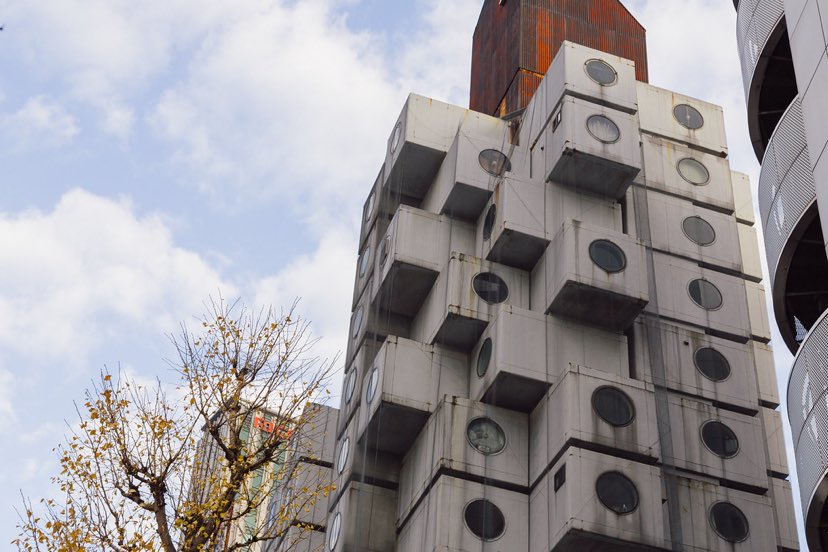
The organic components of Metabolist architecture varied dramatically project to project but the most famous and well employed was modular design. Basically, you could have a bunch of prefabricated interchangeable rooms so that a building was essentially made of massive Legos. This way, the building could always be changed, never set in stone. In this design the architects were not creating a vision of Japan, they were instead handing basic pieces to the people and saying ‘go build a new Japan, however you please!’. The lack of dualism here, the emphasis on destruction and rebirth, the old in the new and the new in the old. This was all, as Kurokawa is keen to point out, inherently Buddhist. This was reincarnation paired with Buddhist logic, as Buddhist philosophers have never accepted Western binaries. Beautifully, then, Metabolism is itself Metabolist – avant garde and deeply traditional, Zen Buddhism turning inward, growing in ways we can’t predict.
What is the message in all this?
I myself have, in a way, been reborn recently. A few months ago I left a four year relationship, I skate now, my accent is even more confusing than it was before. Not too long ago I changed medicines, making me lose a lot of excess weight and freeing me from the oppressive mind palace of bipolar psychosis. I’ve had a glow up. I’m basically a lucid baddie with an hourglass figure and a bizarre and possibly sexual attraction to violence and fire. How would Kikutake, Kurokawa, or Kawazoe tell me to handle this rebirth? I think they would advise me not to look at my past to form my identity, to reject fixed concepts. I must grow naturally, guided only by my desire. And, like the Metabolists, I must strive for growth. I can never be stagnant. This means, in summation, that if I want to do something I should do it. No matter how incomprehensible it may seem to some.
In Socrates’ famous dialogue with Protagoras we are asked to think of an interesting scenario. Imagine a solider who risks everything on the battlefield, staring in the face of terrible odds and hurling themselves forward into the fight. Let us imagine, too, that this warrior is not aware of the danger, perhaps they have underestimated the enemy’s abilities or numbers. Socrates asks Protagoras if this warrior is courageous or foolish – Protagoras rightly calls it madness, idiocy. A soldier only shows true courage when they know they may lose everything. To Socrates this is the case with all virtue. Virtue is a product of knowledge, where there is virtue there is knowledge and vice versa. Yet what of vice? Surely people may know an action is wrong and still do it. After all, most of us drink when we know it is bad for us, most of us eat junk food, people smoke cigarettes and do heroin. The most dedicated party animals might do it all at once.
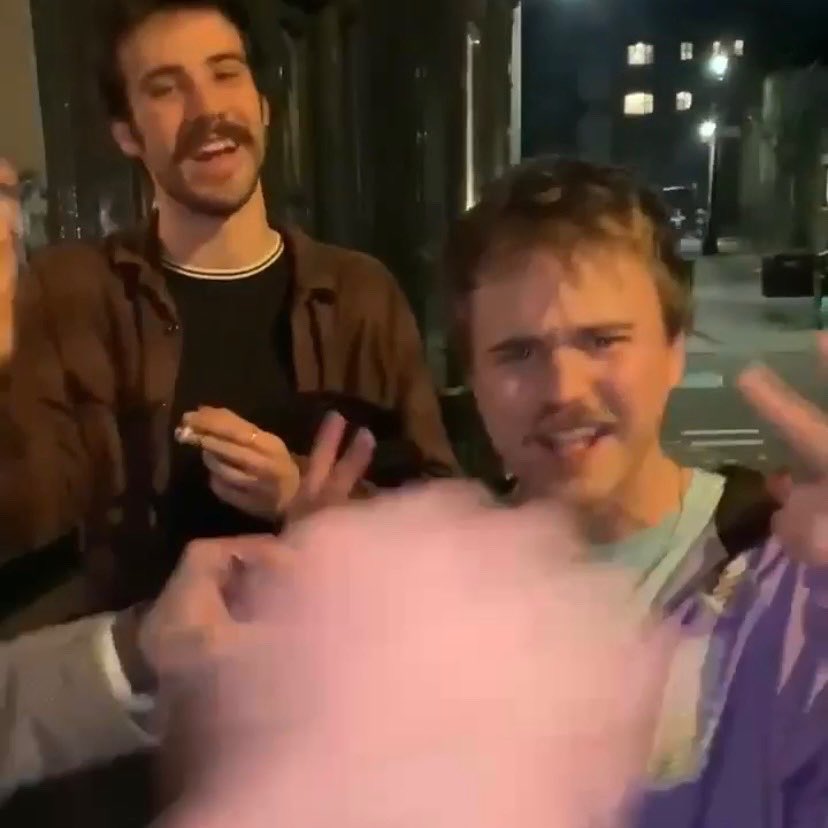
Socrates tells us that no man knowingly does wrong. When a man overeats or drinks in excess it is because he can’t accurately assess his short term pleasure in comparison to his long term misery. The ancient philosopher compares this to the disparity between a large object far away and a small object close by. If we are not wise we may find the smaller object bigger, unaware of the difference in perspective. Car companies know this, too, reminding us that ‘objects in the rearview mirror are closer than they may appear’. To Socrates, wisdom is key to the good life, to virtue, to moral behaviour. There is a lesson here for everyone in the importance of knowledge, but for me, a twenty three year old guy in need of direction, the moral is of extreme relevance. What does this mean for me? Dear reader, this is my lesson:
1. If I am going to do something then I do not know it is wrong
2. If I do not know something is wrong then I have no reason to not do it
3. Everything I do is justified
As I’m sitting on the train from Glasgow to London these thoughts race through my mind at lightning speed. My editor had messaged me the day before, handing me a deadline for my story. His request was very simple – try something for the first time and write about your experience. My response was just as simple – I want to be punched in the face. You see, apart from being clipped at the punk show I’d never really been punched. And that was hardly a punch, it wasn’t even intended for me, didn’t really hurt. Yet the perverse thrill I had that night motivated me to seek out the real thing. The classic oxycontin to heroin story in miniature. I was going to London to see my friend Marek and I knew for a fact he would not punch me. That was my only issue – how am I gonna get that sweet sweet skull crushing feeling? I could try and start a fight but I won’t. Who would want to deal with the consequences purely for the sake of a magazine article? I’m not that stupid. Luckily I thought to message my friend Irish Tom – of all my pals I felt most confident that he would be up for the task. The beautiful man responded quickly: ‘I will absolutely punch you in the face’. Marek and I were going to Tom’s party anyway. There is no god but God. مُحَمَّدٌ رَسُولُ ٱللَّٰهِ
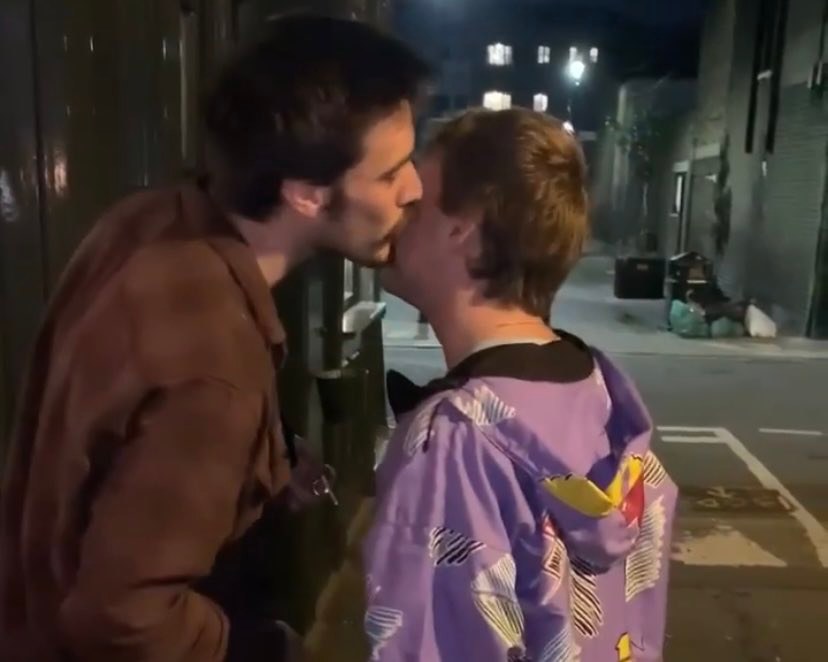
When we rock up to the party around 10pm I’m weirdly nervous. Do I really want to do this? Is this dumb? Would anyone even read this article? But then I remember my studies. Like Macbeth I am a dumbass – I’m obviously going to do this and I always was. There’s no sense in worrying about Fate. I am also a Metabolist, eager to be reborn through desire, to set myself free of constraints and see how I grow. I am a student of Socrates, I will not knowingly do anything wrong. Since I’m going to do this anyway it can’t be dumb. Since it’s not dumb I’m going to do it. I’ve had something like eight beers when I finally ask Tom to punch me. It was pretty unremarkable. I make him do it two more times. Afterwards I walk around the party for a bit, my internal monologue wilin out as I begin to worry about my article. ‘Honestly that sucked, absolutely nothing there. How am I supposed to write about something that was slightly painful for three seconds?’ I tell him to punch me again and he makes me tell the entire room that I consent first. Three more times, one of them actually kinda hurts. He was holding back – it seems even Fighting Irish Tom would not knowingly do wrong.
Even though the punches weren’t that hard I felt a bit stupid afterwards. I’ve been laughing about it ever since – me walking around a party after having drank ten beers, telling everyone I might have a concussion. As if Tom gave me brain damage and not Stella Artois. Two days later I’m out at the pub with Marek, Tom, and Tom’s pal Stefan. After a few drinks Stefan and I make a pact to punch each other in the face – it was pretty satisfying to feel my fist meet his gorgeous face but I also felt terrible about it, he’s the sweetest guy on the planet. The worst thing about it is that Stefan is extremely tall, meaning that I look tiny in the video we took. I have this uncanny ability to make tall people look normal sized and to make myself, a modest 5ft10, look like a toddler. Humiliating. It’s Stefan’s turn to punch me in the face. He clearly feels bad about it. I make him do it three times.The last one was hard enough. He kissed me on the cheek afterwards. I have a new click in my jaw the next day. Click-clack-click-clack. I’m the Japanese Macbeth, a gadfly in Athens.

